That's me! 🥰
13.10.2025 14:16 — 👍 0 🔁 0 💬 0 📌 0
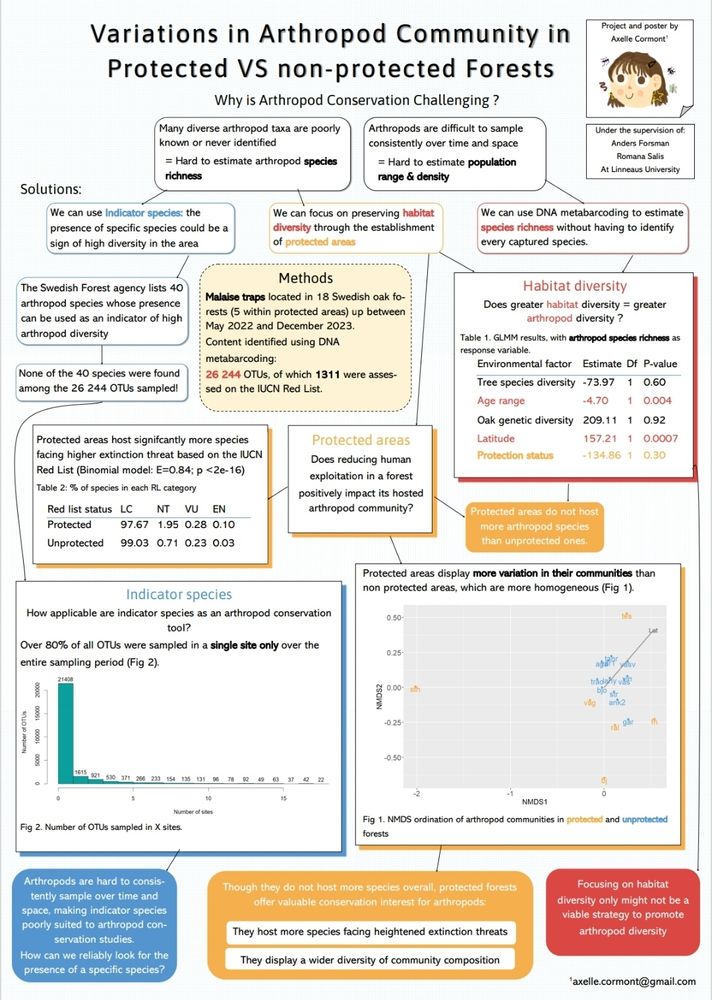
My poster
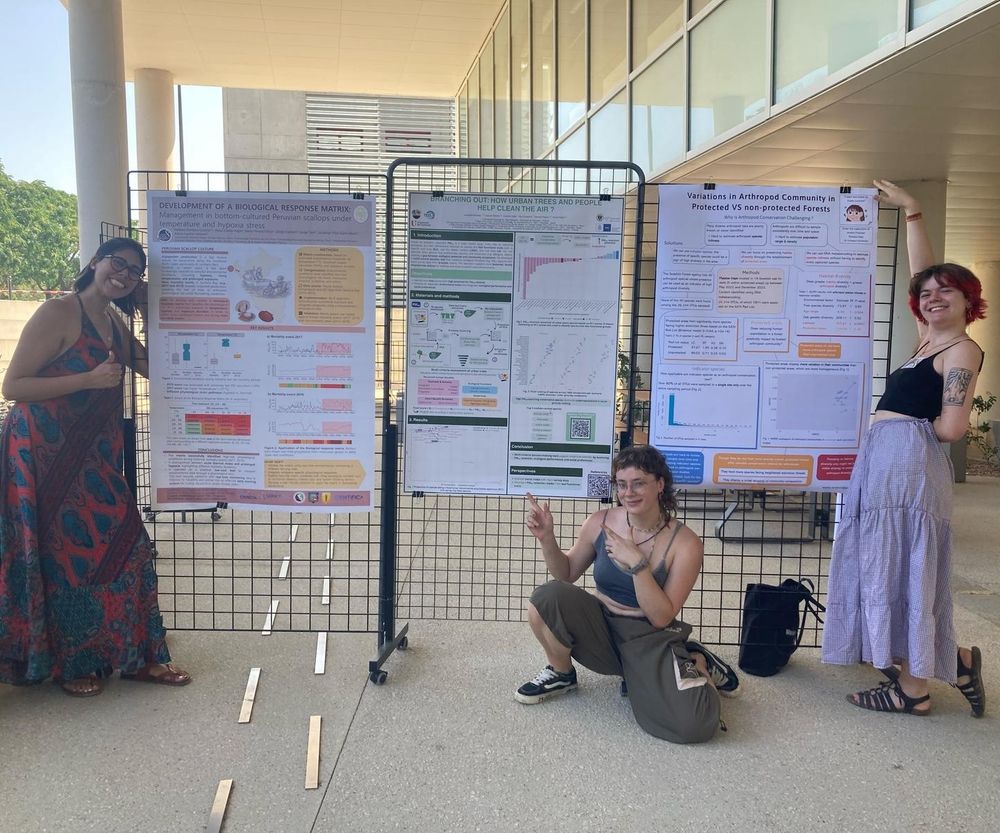
me and two other presenters standing in front of our posters
Presented my master's thesis on arthropod community diversity in protected vs unprotected forests at @ecobhvr2025.bsky.social last week :)
18.08.2025 12:09 — 👍 1 🔁 1 💬 0 📌 0
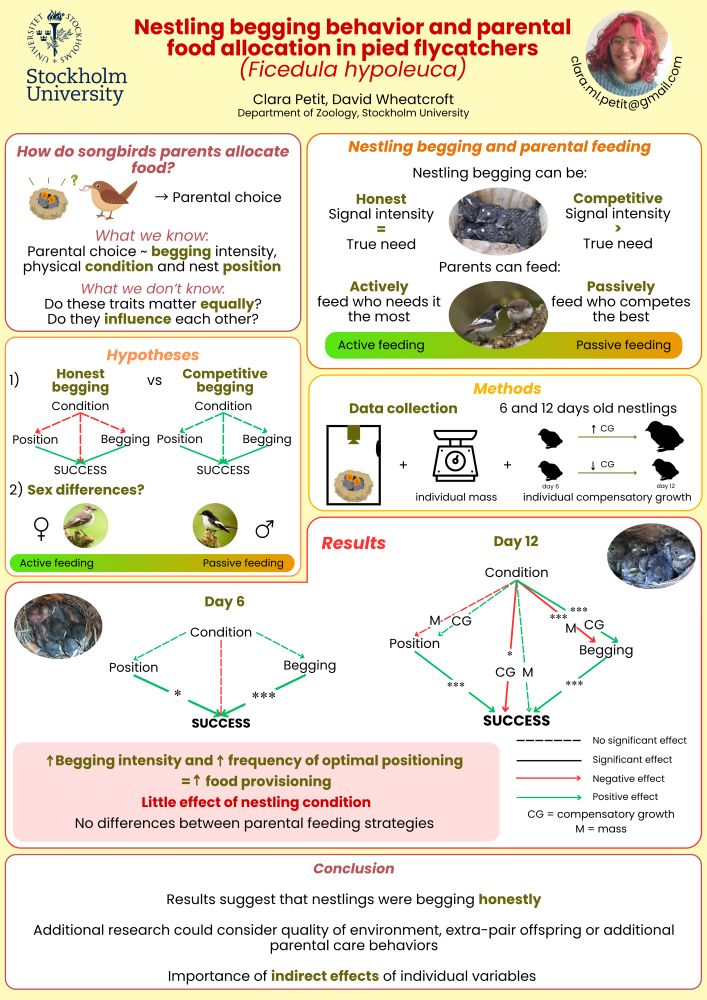
For my master's thesis, I worked on Pied flycatcher (Ficedula hypoleuca) nestling behavior and its link to parental food allocation. Here is a poster summarizing my work!
05.07.2025 22:49 — 👍 2 🔁 1 💬 0 📌 0
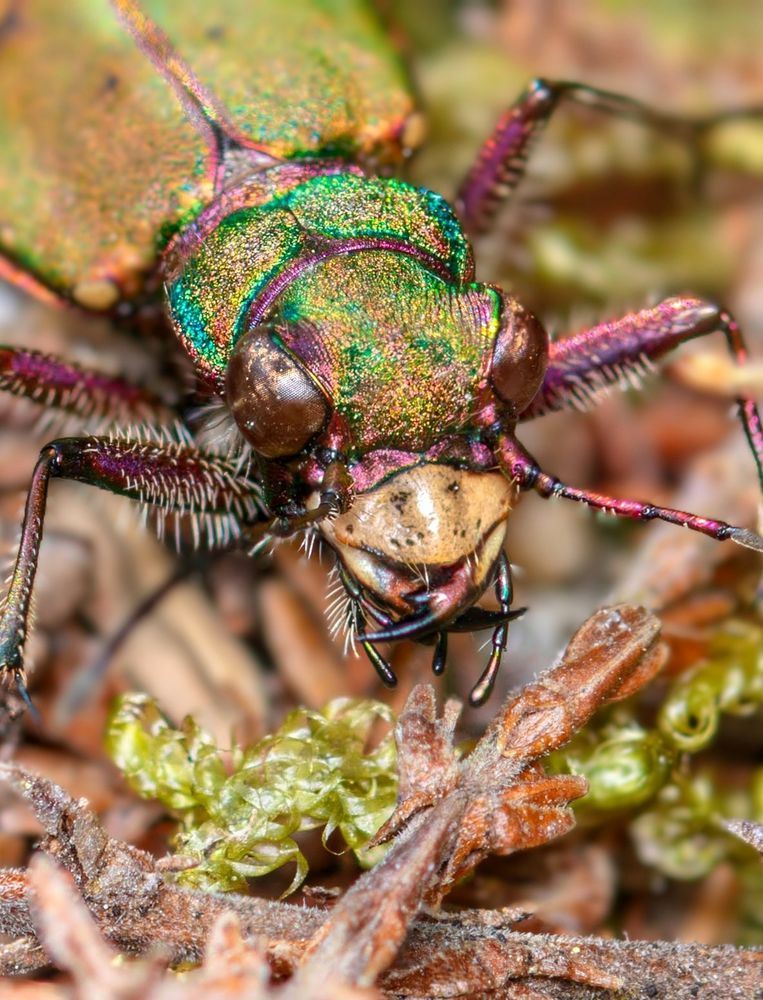
Green Tiger Beetle seen on my walk early this morning
Green Tiger Beetle seen on my walk early this morning 🪲
#greentigerbeetle #tigerbeetle #beetle #insects #invertebrates #Entomology #nature #macro
13.04.2025 17:59 — 👍 190 🔁 28 💬 8 📌 3
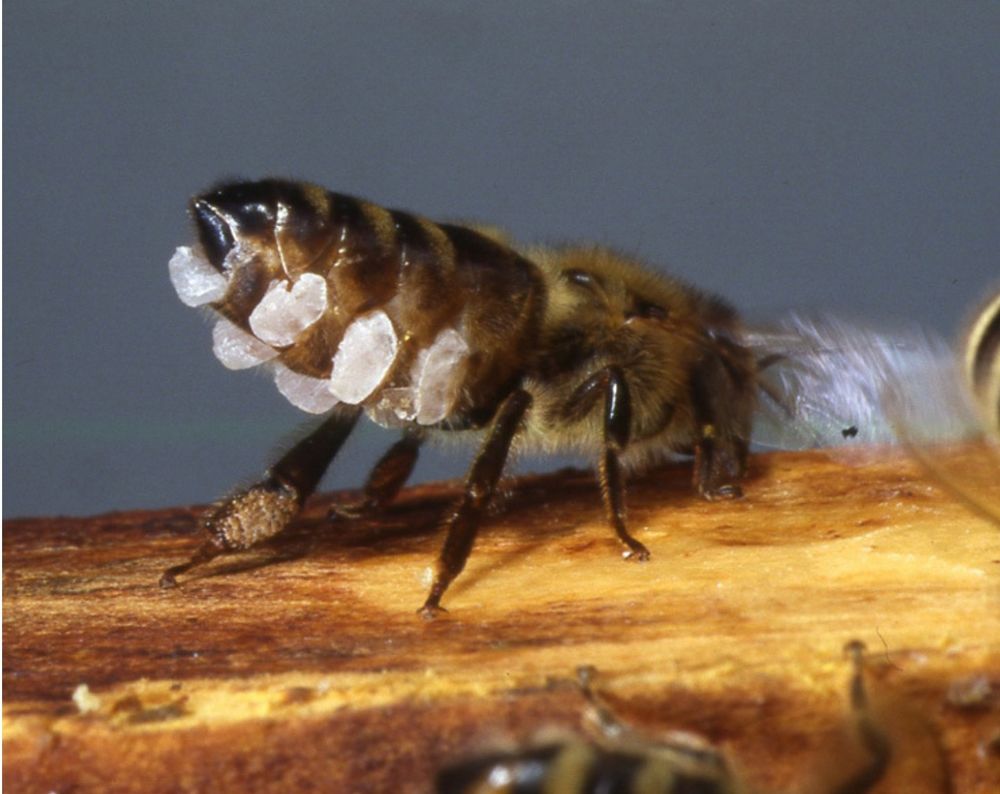
A honey bee facing away from us, her striped abdomen slightly elevated. Small, white, semi-translucent, roughly oval flakes of beeswax emerge from four pairs of glands on the underside of her abdomen. Credit: Honeybee Discovery Center
TIL that honey bees literally secrete beeswax FROM THEIR OWN BODIES, specifically from glands in their abdomen, eight neat flakes at a time. They then chew these flakes and mold them into cells in their hive, which are used to store pollen, honey, and eggs/larvae/pupae
📷 Honeybee Discovery Center
16.04.2025 16:49 — 👍 117 🔁 26 💬 5 📌 3
NEW PAPER from the GLiTRS team! 🎉
We review how best to use different types of evidence to better understand global insect declines 🦗🪳🪲🦋🐛🐜
"Integrating multiple evidence streams to understand insect biodiversity change" published in @science.org
🔗 tinyurl.com/mr35bdaa
A summary 🧵 below (1/7)
04.04.2025 09:57 — 👍 42 🔁 27 💬 1 📌 4

This Hawaiian island's 'freakosystems' are a warning from the future
Ecosystems which have never been seen before are being accidentally created by humans. They offer a stark look into the nature of tomorrow.
We're living in a landscape of novel ecosystems, emerging in every part of the world.
The topic has been ably covered in this BBC article on "freakosystems" by Matthew Ponsford @interspecies.agency
www.bbc.com/future/artic...
04.04.2025 13:21 — 👍 20 🔁 11 💬 1 📌 3
Nice BBC feature on novel ecosystems, including some of our @econovoau.bsky.social work (led by @mattkerr.bsky.social, @anordonez1.bsky.social & Erick Lundgren) 🌿🍃🐎
04.04.2025 14:28 — 👍 14 🔁 7 💬 0 📌 0
science-inspired comics and illustration | asst biology professor at MassArt | former postdoc at Harvard OEB | she/her | opinions my own
www.hudrewthis.com
We’re the museum looking deeper into the Earth’s past to shape a new future where both people and planet thrive.
Protecting the planet, it’s in our nature. 🌍
Ex-philosopher, ex-Tweeter.
Email: info@contrapoints.com
Conservation Scientist #islandecosystems #coralreefs #management @SIF_Seychelles, Co-lead @AldabraCleanUp, FlagCarrier @WingsWorldQuest Looking for a new role
This is the official Bluesky account for the 17th edition of the Ecology & Behaviour conference to be held at the CEFE Montpellier from 11-15 August 2025! #ecobhvr2025
Graduate student in Ethology from Stockholm University, I'm looking for a PhD (or a research assistant position) allowing me to work on social behaviors, parent-offspring behaviors or sibling behaviors in mammals and/or birds!
Istituto Nazionale di Biologia, Ecologia e Biotecnologie Marine
Evolutionary biology, genetics, conservation & beyond
@szndohrn.bsky.social 🧜♀️ 🌊 @cemeb.bsky.social
Bio-diverse & inclusive community 🌈
raffinifrancescalab.weebly.com
littorina.at.biopolis.pt
gu.se/en/cemeb-marine-evolutionary-biology
Your own personal home page is waiting. Create and surf awesome websites for free. https://neocities.org
Squid biologist
Science communicator
Artist
Philadelphian
I run @SkypeAScientist.bsky.social
Creator of the SquidMobile
https://linktr.ee/Sarahmackattack
Faroe Islander Seabird ecotoxicology, biodiversity and invasive species. Hoarder of bird skulls, feathers & eggshells. Natural history books and taxidermy are my love languages. University of Aberdeen and Glasgow alumni - got Meniere's too
2003 🇫🇴🏴🇩🇰🏴🇫🇴2017
Professor 👩🏫 • sea turtle biologist 🐢 🛥️• marine scientist 🌊 • Director, UCF Marine Turtle Research Group • amateur silversmith ⚒️ • beachcomber 🦀 • crafter🧵🎨
Marine ecology • conservation • animal telemetry 🛰️ • marine management & policy • movement ecology
Emeritus Prof- founded the Marine Predator Research Group @Macquarie_Uni & lead the Australian Integrated Marine Observing System Animal Tracking Facility- always repost research positions in marine & conservation science 🏄🏻♂️🤿📸🦭🐬🐠🐟🐢🐧🦈🐋🐳🦑🐙
sociolinguist: conservation, tourism, environmental communication, climate knowledge networks, sea turtles & seals🐢🦭| Associate Professor @NHH | Researcher @NORCE | PhD @uhmanoa | new book: multispecies discourse analysis
Professor of conservation biology and zoology at Aydın Adnan Menderes University, Türkiye.
PhD student | University of Central Florida
UCF Marine Turtle Research Group
Sea turtles and Marine Pollution.
#plastic pollution #microplastics #heavy metal
Integrated BS-MS @IISER Kolkata,
MS thesis @IISC Bangalore
Evolutionary biologist
Post doc at Oregon State U.
Evolution, genomics, immune systems
🐢🧬🌈
she/her
Scientist: #biodiversity, #macroecology, #climatechange, #restoration & #rewilding, #novelecosystems, #plants & #vegetation, #megafauna, #human-#nature relations & #remotesensing. Director, https://econovo.au.dk/
Naturalist interested in living things, their investigation and conservation 🦋🌿🌳 | This especially applies to sharks on a global scale 🦈💙🌍 | Lover of good guitar music 🎸 and Denmark 🇩🇰





